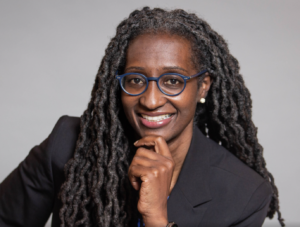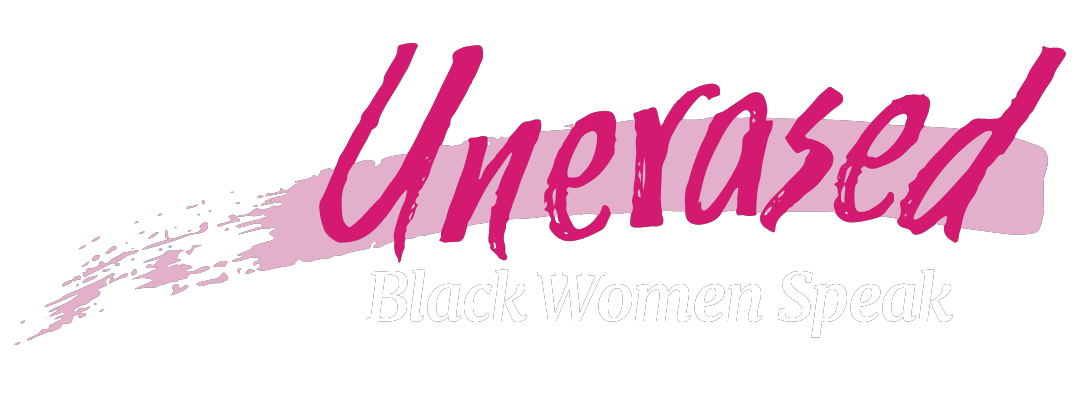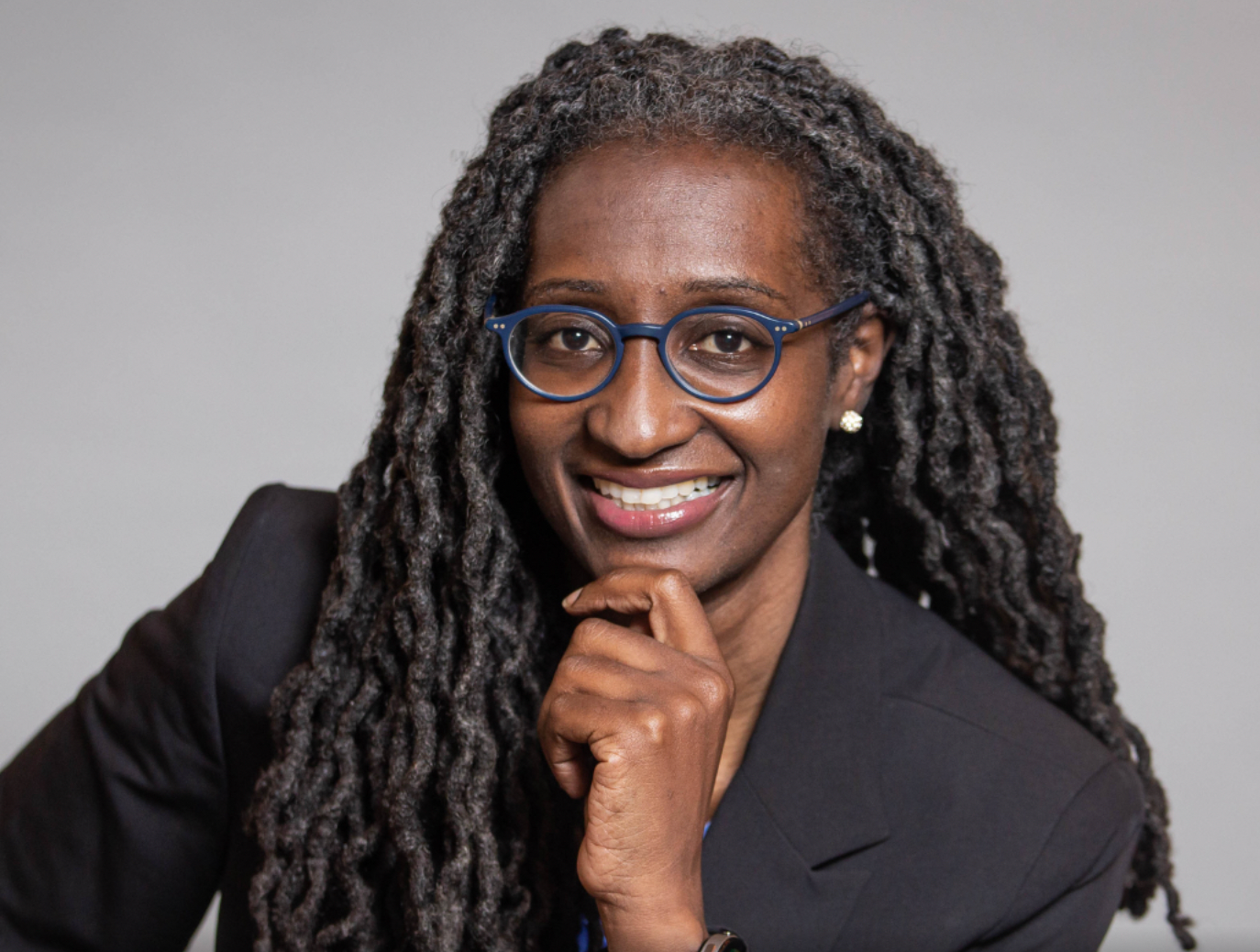Written by the Washington Informer, reprinted from Word in Black
Check out how these history-makers are tackling environmental justice in the architecture industry, the courtroom, and the boardroom.
Academic and activist Robert Bullard has long been recognized as one of the environmental justice movement’s key founders. Not everyone may know, however, that his groundbreaking research in the early ‘80s was actually inspired by a 1979 lawsuit brought by attorney Linda McKeever Bullard — his wife. That case, Bean v. Southwestern Waste Management Corp., was the first environmental discrimination lawsuit in U.S. history.
Black women have led the fight against pollution and the way toxins disproportionately harm Black, brown and low-income communities from the beginning. It’s an intersectional fight, with factors like age, disability, income, race and education all factoring into a person’s or community’s risks for toxic exposures.
It’s intersectional in another way, too: environmental injustice demands attention from all sectors, especially as our planet gets hotter. Climate change stymies progress toward addressing air pollution disparities and creates new or worsening inequalities when it comes to flood, storm and wildfire risks.
But Black women are leading the way on toward solutions across industries. In celebration of Women’s History Month, check out how these three history-makers are tackling environmental justice in the architecture industry, the courtroom and the boardroom.
Seeking Justice, From the Council to the Courtroom: LaRuby May, Law Firm Partner, May Jung Law Firm
Hair relaxers. Baby formula. Talcum powder. All three of these products have faced lawsuits over hidden health impacts — and LaRuby May, former Ward 8 council member and current law firm partner, has fought for consumers in all three cases.

LaRuby May, partner at May Jung Law Firm and former Ward 8 council member. (Courtesy photo)
“You don’t listen to me when I protest, you don’t listen to me when I sign a petition, you don’t listen to me when I say you’re a bad guy. But you listen to that judge when that judge says $3 billion,” May said. “So that’s why I think the legal arm becomes an opportunity to look at environmental discrimination, toxins or just any of those things that have continued to harm, disproportionately, Black and brown communities.”
May traces some of her interest in fighting environmental and chemical injustices back to her upbringing in Pensacola, Florida. At the time, the small city housed the nation’s third-largest Superfund site, a former wood treatment plant that had poured chemicals directly into the soil during its operation.
But her path from writing an undergraduate paper about that Superfund site to filing suits against harmful chemical producers was not exactly a straightforward one. Soon after moving to the District in 1997 to get her graduate degree from George Washington University, May started a nonprofit called the Gift Center. Funded by a Virginia philanthropist and located on Minnesota Avenue SE, the organization focused on “longevity,” providing support to a group of 32 kids all the way from toddlerhood to college age and beyond.
May left the nonprofit in the mid-2000s to start law school at UDC. While there, she took a job in then-Council member Marion Barry’s office. From there, she became more involved in the Ward 8 community where she lived and worked with Adrian Fenty’s and Muriel Bowser’s mayoral administrations.
“[I was] that person, sometimes a well-received bug in people’s ear and sometimes that gnat that they’re trying to slap out,” May said. “In folks’ ear about, ‘hey, what about Ward 8? What about Ward 8? What are we doing for Ward 8?’”
When Barry died in 2014, May ran for his council seat and won. She lost reelection, and said that she now counts both the chance to serve on the council for a term and the “opportunity to be unsuccessful” the second time around as “tremendous blessings.”
Already armed with her JD, May decided to try her hand next at practicing law. She saw a need for a community-centered real estate lawyer amid Ward 8’s fast-growing developments, so she opened up her own law practice with real estate law in mind. But in 2018, Patricia Denson — a woman May had known for decades — lost her child, Stormiyah Jackson, to suicide. Denson asked May to help represent her in a suit against the boarding school where the 12-year-old had died.
“Through the journey of staying on Stormiyah’s case, I had this ‘aha’ moment — [that] this personal injury role [is an] opportunity to represent my community, to represent Black folk, to represent poor Black folk, to get justice,” May said.
Six years later, May is now one of two partners at May Jung Law Firm, which primarily works in civil rights, personal injury, workers’ compensation and mass tort law. Much of the May Jung team is made up of women of color. May said that’s rare, particularly among firms participating in mass tort cases — civil suits involving lots of plaintiffs harmed by an action (or inaction) of one or a few big actors.
“Our perspective on the fight is just different,” May said of an ongoing case about hair relaxers’ link to ovarian, uterine and endometrial cancers. “They didn’t just put out a bad product — they put out a bad product and put it into Black, poor communities. … You knew it was bad for my community, and you didn’t care.”
The firm places heavy emphasis on fighting for fairness in what May describes as “David and Goliath” cases against big companies or other powerful entities.
“We’re gonna be a part of the slingshot that comes in and knocks you down, and make sure that we get justice for people,” May said.
Strategic Leadership for a More Equitable Industry: Lakisha Ann Woods, CEO, American Institute of Architects
Lakisha Ann Woods said that she first became interested in the American Institute of Architects (AIA) because of the organization’s strategic plan. She was excited to see that it prioritized “climate action for human and ecological health” and “racial and gender equity.”

Lakisha Ann Woods, CEO of the American Institute of Architects (Courtesy photo)
When she interviewed for the top job on the business side at AIA, she wanted to make sure the organization was ready to take those commitments from words to action.
“I told them, ‘Did you just put this in writing so you can kind of check that box? Or do you want someone who’s going to be an evangelist for these issues?’” Woods said. “Because if you want somebody who’s really going to take the lead, take action and try to move the needle, I’m your girl. But if not — hire someone else.”
After just over two years as CEO at the largest design organization in the world, Woods has notched a few key wins. She led a successful campaign to eliminate a requirement that the six exams necessary for licensure all take place within a five-year period. That “rolling clock” policy disproportionately kept women and people of color from getting their architecture license, a study from the National Council of Architectural Registration Boards showed.
Under Woods’ leadership, AIA also launched a weekly video interview series in November that showcases underrepresented architects and designers. The organization has published more than 50 such videos on its YouTube channel, a platform where it has over 10K subscribers.
Those videos aim to “elevate and celebrate” a diverse set of voices within architecture, Woods said, in order to create a more inclusive industry. She sees this as crucial to addressing the environmental injustices and health disparities that Black, brown and low-income communities face within the context of the built environment.
The design of neighborhoods and buildings can only become genuinely equitable when the people involved in creating that design reflect the people living and working there, Woods said.
“You want to know that the spaces that you occupy — whether it’s your home, or the park [nearby], or your school — that you feel that you’re a part of it, that you’re welcome,” Woods said. “And that design … it impacts all of us deep in our soul.”
The second major challenge Woods set out to tackle at the AIA is buildings’ contributions to climate change. Because communities of color disproportionately bear the brunt of both fossil fuel pollution and climate change impacts, this second goal is intricately intertwined with Woods’ efforts to diversify the architecture industry.
In her management role, Woods said she aims to support architects in expressing to building owners the benefits of design elements that conserve water, reduce energy use, improve indoor air quality or generate renewable energy. Often, she said, the first things clients want to cut out of a design are sustainability features; architects need to know how to convey why those features are important for both the planet and the building’s occupants.
“It’s about providing people with tools and resources, so they know how to make those climate-focused decisions when they’re advocating for a design and also when the owners are trying to understand why those decisions had been made.”
Pushing for Clean Air Everywhere: Glory Dolphin Hammes, CEO and Foundation Director, IQAir
The road to business leadership at a global air quality company began in high school for Glory Dolphin Hammes. She spent her teenage years in Santa Monica leading her school’s Black Student Union, volunteering for beach cleanups and participating in protest movements — including some in support of the United Farm Workers Union and communities fighting chemical pollution.

Glory Dolphin Hammes, CEO of IQAir’s North American division and director of the IQAir Foundation (Courtesy photo)
“Essentially, that was the beginning of sort of understanding how the environment actually impacts the human being, and human existence,” Dolphin Hammes said. “And knowing that it’s something very much so that needs to be cared for, as we care for our own existence.”
Today, Dolphin Hammes leads the North American division of IQAir, a Swiss company that sells clean air technology and operates the world’s largest free air quality monitoring system. The mother of two also founded the nonprofit IQAir Foundation in 2017 and now serves as its director.
“I started the foundation just out of pure passion for taking what it is that we do and making that accessible for folks that could not afford it,” Dolphin Hammes said. “The foundation allows us to have a vehicle through which people who truly need mitigation [of air pollution] — because they are environmentally impacted — can afford it.”
The foundation helps provide schools with air filtration systems and partners with community groups to offer air quality monitoring technology and data-sharing services in areas exposed to air pollution.
A history of racist and imperialist policies have left Black, brown and poor communities to deal with far dirtier air on average than richer, whiter communities — in the U.S. and around the world. On top of that, Dolphin Hammes said, wealthier places are more likely to have the technology needed to track air pollution and identify hot spots: IQAir has about 13,000 monitors in its network in the U.S., but less than 1,000 on the whole continent of Africa.
One of the initiatives she’s currently working on aims to address that second problem by finding “clean air champions” in Africa and Latin America who can work with IQAir to help connect new communities to air quality monitoring technology.
“Knowledge is power. And as people find out, and as they become more knowledgeable about the air quality surrounding them, they actually gain power and they gain choice in the matter,” Dolphin Hammes said. “They’re able to make informed choices about things that impact the air that they’re breathing.”
The post Three Black Women Making History in Environmental Justice Across Industries appeared first on The Washington Informer.



